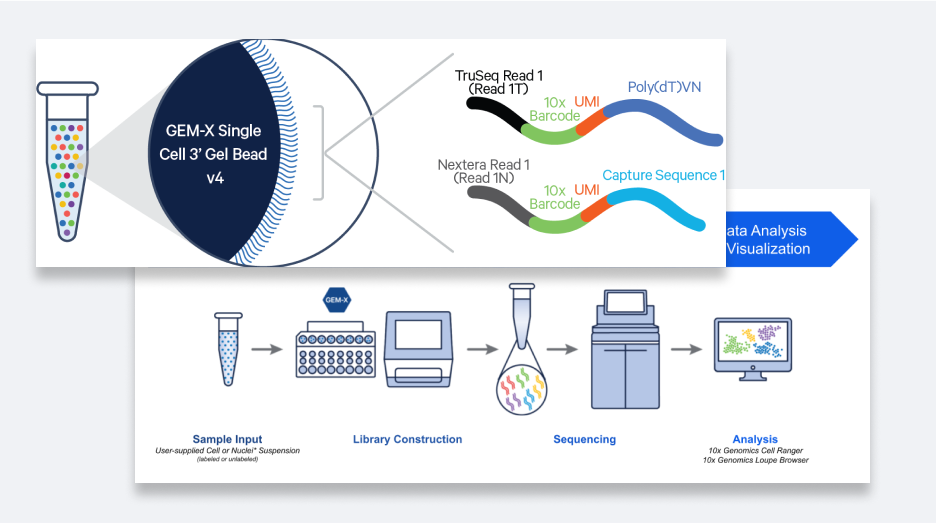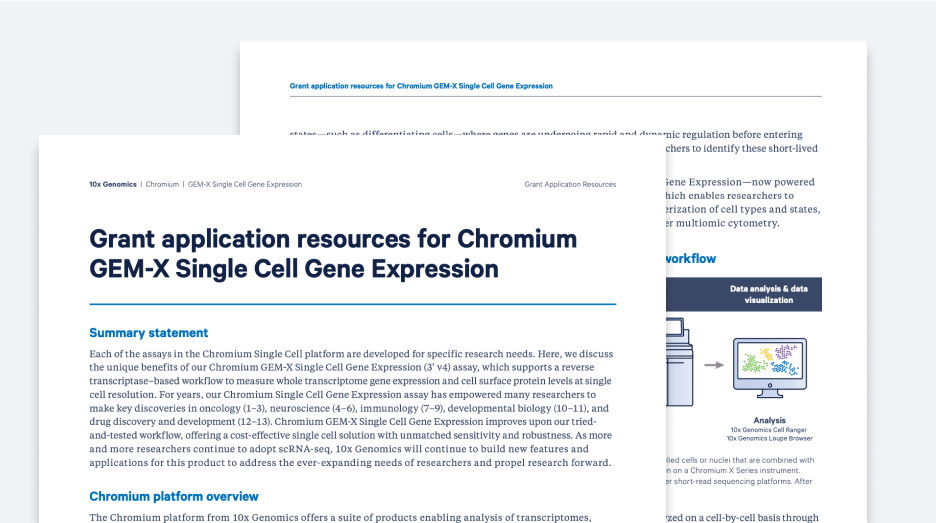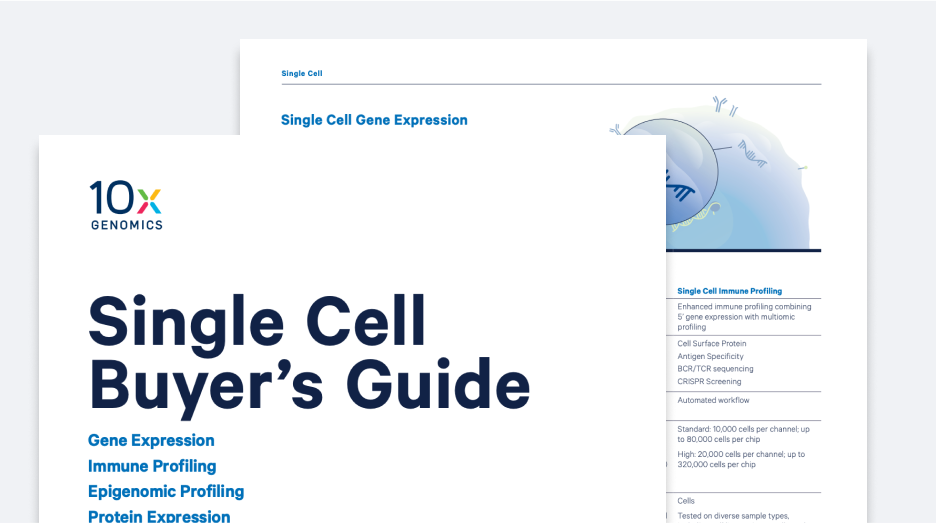

单细胞分析能够带来有意义的发现
批量细胞测序产生了平均读数,遗漏了驱动复杂生物学的关键细节。
单细胞测序让科学家们能够看到每个细胞的独特基因表达模式。这种视野能够更全面地表征组织异质性,揭示对健康和疾病有重大影响的稀有细胞类型。
Chromium单细胞分析的优势
- 更高的基因检测灵敏度,细胞回收率高达80%。
- 增强对具有挑战性的细胞类型的检测,包括中性粒细胞。
- 通过最关键步骤的自动化,减少手动操作时间,降低出错风险。
- 生成更高质量的文库,能够以较低深度进行测序。
- 以10年经验、2,200多项专利和超过15亿美元的研发投资作为后盾。
分析更多样本类型
利用性能可靠的优化方案分析新鲜、冷冻或固定样本,甚至是FFPE样本

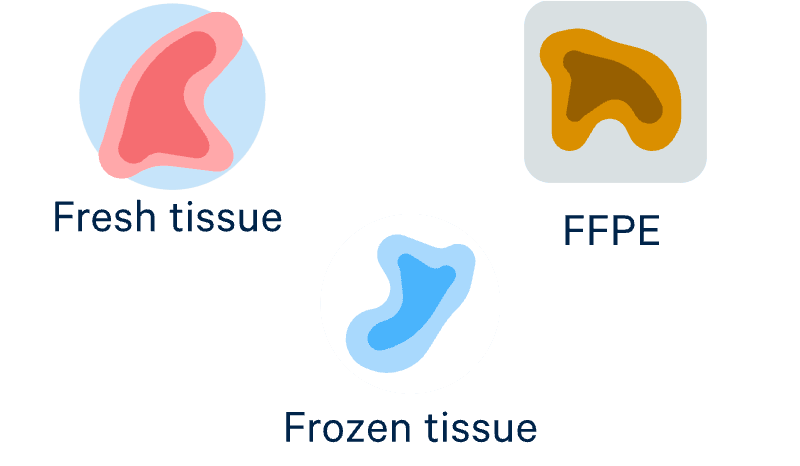
关键步骤自动化,减少出错
在短短几分钟内生成多达200万个带有条形码的微滴,细胞回收率高达80%
构建高质量的测序级文库
生成可用读数高达95%的文库,让您能以更低的测序成本检测更多基因

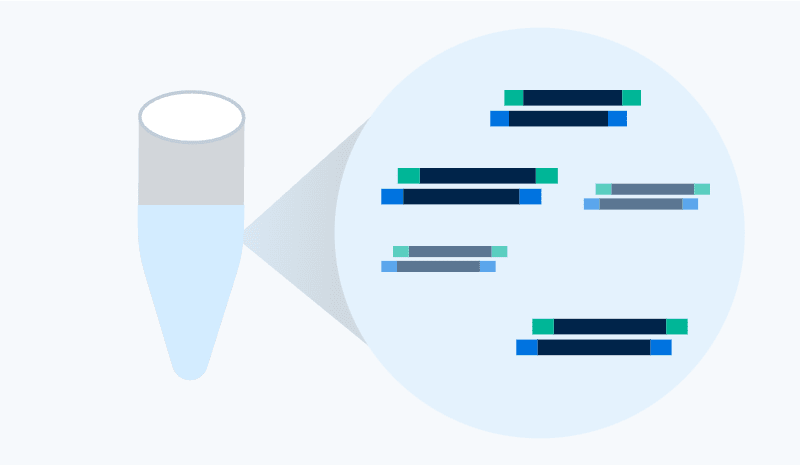
轻松分析和发现
利用功能强大的软件工具对数据进行处理和可视化,无需生物信息学经验



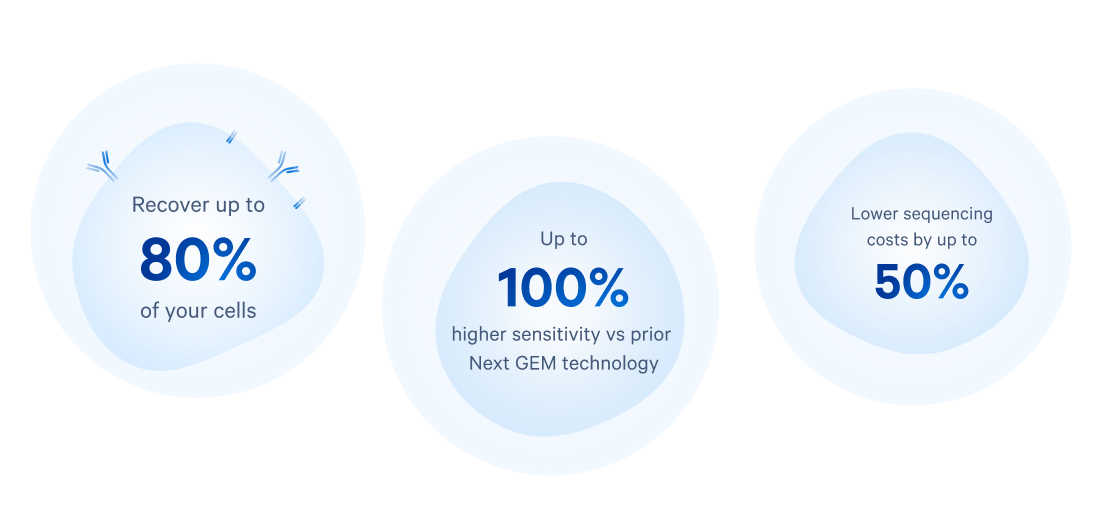
通用型基因表达
不限物种,适用性最广。
基于逆转录的化学方法
提供最广泛的信息,包括异构体、SNP等
同一个细胞的多组学读数
3’或5’基因表达
TCR/BCR
蛋白质
CRISPR
用于具有成本效益的研究
每次运行最多 160,000 个细胞(1-8 个样本
Flex基因表达
按照您的日程表进行固定、分批和运行。
基于探针的化学方法
在低质量样本和FFPE样本上表现出色
同一个细胞的多组学读数
基因表达
蛋白质
CRISPR
高通量的选择
每次运行可分析多达200万个细胞(1-16个样本)
产品
表观基因组和染色质分析
揭开表观基因组图谱。
ATAC-seq化学方法
探索开放染色质区域
与3’基因表达直接关联(多组学试剂盒)
同一个细胞的多组学读数
染色质可及性
3’基因表达
可扩展的细胞核制备
每次运行可分析多达80,000个细胞核(1-8个样本)
David Michonneau博士
法国圣路易医院血液学教授
平台 |  Chromium单细胞分析 |  Visium空间分析 | 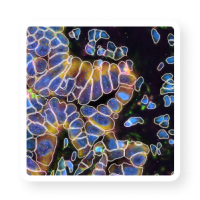 Xenium原位分析 |
|---|---|---|---|
何时使用 | Comprehensive single cell data 适用于细胞群体和状态的深度表征 | High-resolution spatial gene expression 了解复杂组织、邻域和细胞间相互作用。与其他空间多组学、组织学和形态学方法整合。 | |
为何使用 | 无偏的单细胞发现 每个基因的灵敏度高 | 无偏的空间发现 | 靶向的空间探索 每个基因的灵敏度高 |
应用 | 全转录组基因表达 蛋白质 TCR、BCR CRISPR ATAC | 全转录组基因表达 | 靶向基因表达(多达5 000个基因) |
分辨率 | 单细胞 | 分配在2-µm区域内的转录本 | 单细胞 |
数据读出 | 基于NGS | 基于NGS | 基于成像 |
样本兼容性 | 来自新鲜、冷冻或FFPE样本的单细胞或单细胞核悬液 | FFPE样本 | 新鲜冷冻样本 FFPE样本 |





